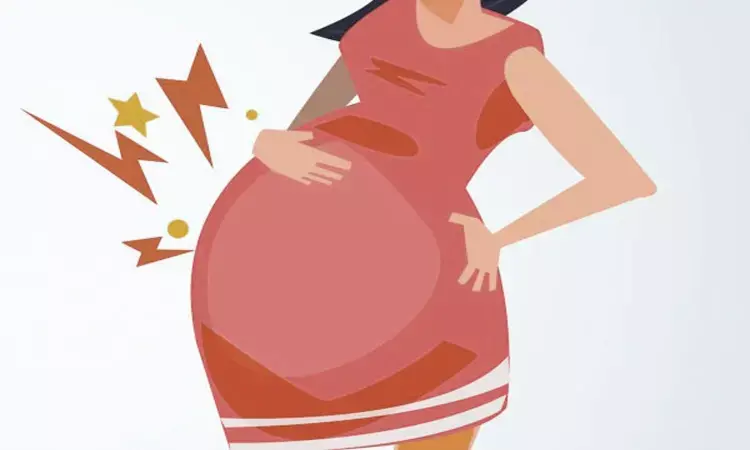- Home
- Medical news & Guidelines
- Anesthesiology
- Cardiology and CTVS
- Critical Care
- Dentistry
- Dermatology
- Diabetes and Endocrinology
- ENT
- Gastroenterology
- Medicine
- Nephrology
- Neurology
- Obstretics-Gynaecology
- Oncology
- Ophthalmology
- Orthopaedics
- Pediatrics-Neonatology
- Psychiatry
- Pulmonology
- Radiology
- Surgery
- Urology
- Laboratory Medicine
- Diet
- Nursing
- Paramedical
- Physiotherapy
- Health news
- Fact Check
- Bone Health Fact Check
- Brain Health Fact Check
- Cancer Related Fact Check
- Child Care Fact Check
- Dental and oral health fact check
- Diabetes and metabolic health fact check
- Diet and Nutrition Fact Check
- Eye and ENT Care Fact Check
- Fitness fact check
- Gut health fact check
- Heart health fact check
- Kidney health fact check
- Medical education fact check
- Men's health fact check
- Respiratory fact check
- Skin and hair care fact check
- Vaccine and Immunization fact check
- Women's health fact check
- AYUSH
- State News
- Andaman and Nicobar Islands
- Andhra Pradesh
- Arunachal Pradesh
- Assam
- Bihar
- Chandigarh
- Chattisgarh
- Dadra and Nagar Haveli
- Daman and Diu
- Delhi
- Goa
- Gujarat
- Haryana
- Himachal Pradesh
- Jammu & Kashmir
- Jharkhand
- Karnataka
- Kerala
- Ladakh
- Lakshadweep
- Madhya Pradesh
- Maharashtra
- Manipur
- Meghalaya
- Mizoram
- Nagaland
- Odisha
- Puducherry
- Punjab
- Rajasthan
- Sikkim
- Tamil Nadu
- Telangana
- Tripura
- Uttar Pradesh
- Uttrakhand
- West Bengal
- Medical Education
- Industry
Antenatal Fexofenadine not linked to risk of abortion or premature birth

A new JAMA study has revealed that Fexofenadine use during pregnancy was not linked with birth defects or spontaneous abortion.
Antihistamines are one of the most commonly prescribed drug classes during pregnancy. Fexofenadine hydrochloride is a widely used, nonsedating, second-generation antihistamine for treatment of allergic disorders, including seasonal rhinitis and chronic idiopathic urticaria, estimated to affect 20% to 30% of women of childbearing age.
Fexofenadine hydrochloride is a frequently used drug for treatment of allergic conditions during pregnancy, but the fetal safety of fexofenadine use has not been well studied.
The researchers conducted a study to investigate the risk of adverse fetal outcomes associated with fexofenadine use during pregnancy.
The researchers conducted a nationwide registry-based cohort study on pregnancies in Denmark from January 1, 2001, to December 31, 2016. The data analysis was performed from March 21, 2019, to January 29, 2020. From a cohort of 1 287 668 pregnancies, fexofenadine use was compared with cetirizine hydrochloride use during pregnancy, matched in a 1:1 ratio on propensity scores. Distinct study cohorts and exposure time periods were applied according to each outcome analysis. Sensitivity analyses included comparing pregnancies with vs without fexofenadine exposure during pregnancy but with previous use before pregnancy and with loratadine use during pregnancy as additional comparator groups.
For the analyses of major birth defects and spontaneous abortion, a total of 2962 and 4901 pregnancies with fexofenadine use were included, respectively, matched in a 1:1 ratio with pregnancies with cetirizine use. Mean (SD) age of the fexofenadine cohort for analyses of major birth defects was 30.6 (4.8) years and, for analysis of spontaneous abortion, 30.4 (5.5) years. Infants born with major birth defects occurred in 118 pregnancies (4.0%) with fexofenadine use compared with 112 pregnancies (3.8%) with cetirizine use. Spontaneous abortion occurred in 413 pregnancies (8.4%) with fexofenadine use compared with 439 pregnancies (9.0%) with cetirizine use.
Fexofenadine use during pregnancy was not associated with an increased risk of major birth defects or spontaneous abortion compared with cetirizine use during pregnancy. Preterm birth occurred in 370 pregnancies (7.5%) with fexofenadine use compared with 382 pregnancies (7.7%) with cetirizine use (prevalence OR, 0.97; 95% CI, 0.83-1.12), SGA occurred in 515 pregnancies (10.1%) with fexofenadine use compared with 523 pregnancies (10.2%) with cetirizine use (prevalence OR, 0.98; 95% CI, 0.87-1.12), and a total of 16 pregnancies (0.3%) with fexofenadine use ended in stillbirth compared with 24 pregnancies (0.4%) with cetirizine use (HR, 0.67; 95% CI, 0.36-1.27). Sensitivity analyses of the primary outcomes, including the comparisons of pregnancies with loratadine use and pregnancies unexposed to fexofenadine during pregnancy but with prior use of fexofenadine, showed similar results.
The researchers concluded that use of fexofenadine during pregnancy does not appear to be associated with an increased risk of adverse fetal outcomes.No association was noted between fexofenadine use during pregnancy and risk of major birth defects, spontaneous abortion, preterm birth, small size for gestational age, or stillbirth.
For further reference log on to:
JAMA Pediatr. Published online June 1, 2020.
Dr Kamal Kant Kohli-MBBS, DTCD- a chest specialist with more than 30 years of practice and a flair for writing clinical articles, Dr Kamal Kant Kohli joined Medical Dialogues as a Chief Editor of Medical News. Besides writing articles, as an editor, he proofreads and verifies all the medical content published on Medical Dialogues including those coming from journals, studies,medical conferences,guidelines etc. Email: drkohli@medicaldialogues.in. Contact no. 011-43720751


